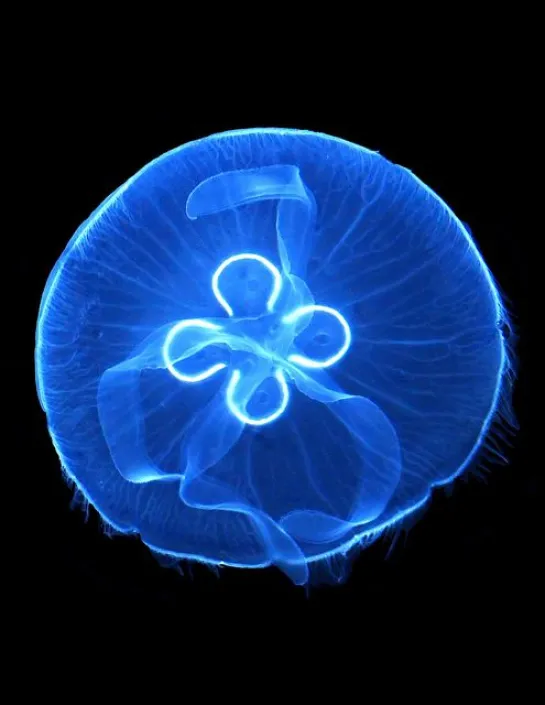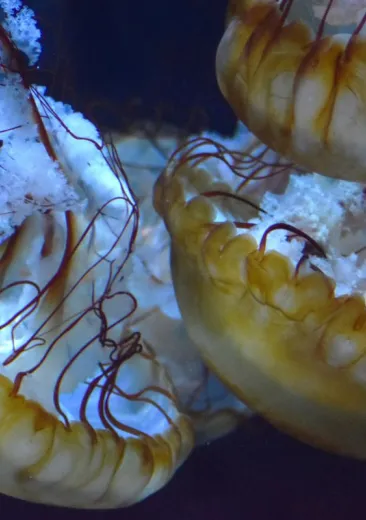The lifecycle of a jellyfish has two phases. The first is the fixed phase when the polyp attaches itself to a stone on the seabed. The second, free phase starts when the season changes. The polyp strobiles and produces up to ten ephyrules, a tiny jellyfish that grows to adulthood. Following fertilisation between two adult jellyfish, a new larva will be deposited on the seabed and the cycle starts again!

Identity card
common jellyfish
- Scientific name:
- Aurelia aurita
- Family:
- Ulmaridae
- Class:
- Scyphozoa
- Phylum:
- Cnidaria
- Year of description:
- Linnaeus, 1758
- IUCN Status:
- Not Evaluated
- Distribution:
-
This jellyfish is widely found in all oceans, except in the very cold waters of the North and South Poles.
- Habitat:
-
The common jellyfish is found in all oceans and often lives on the surface of the water.
- Size:
When fully extended, its umbrella measures 40 cm in diameter.
- Diet:
-
Its diet mainly comprises herring larvae and small crustaceans. It can also eat other jellyfish and even its own larvae.








